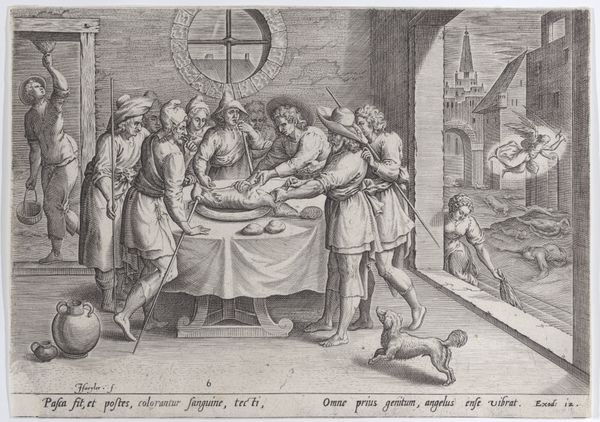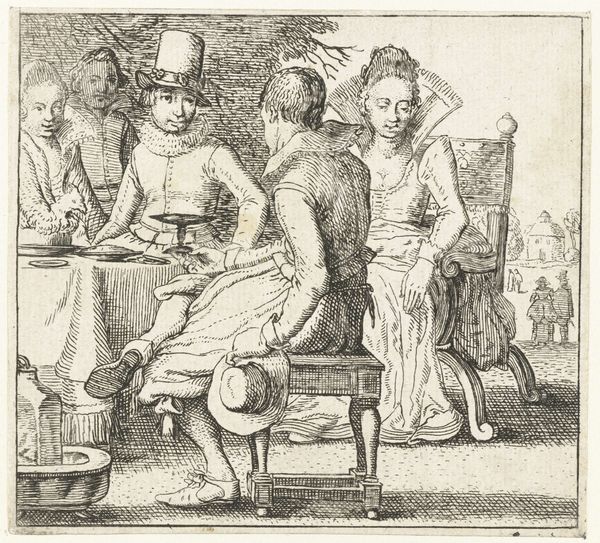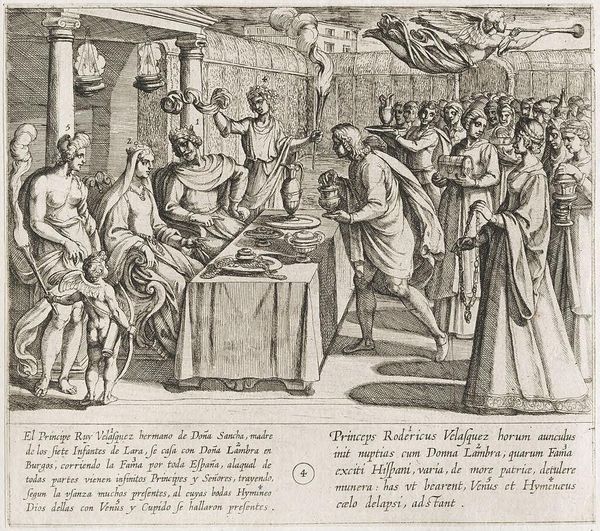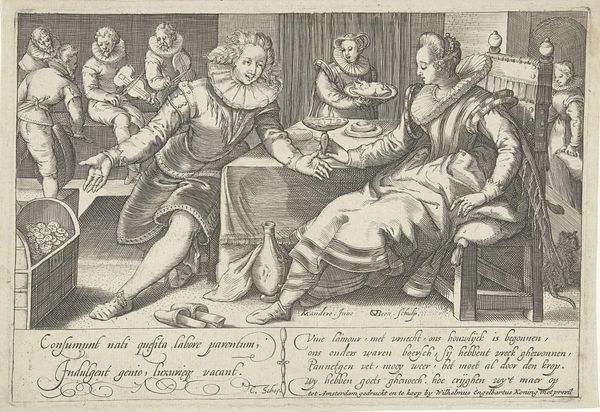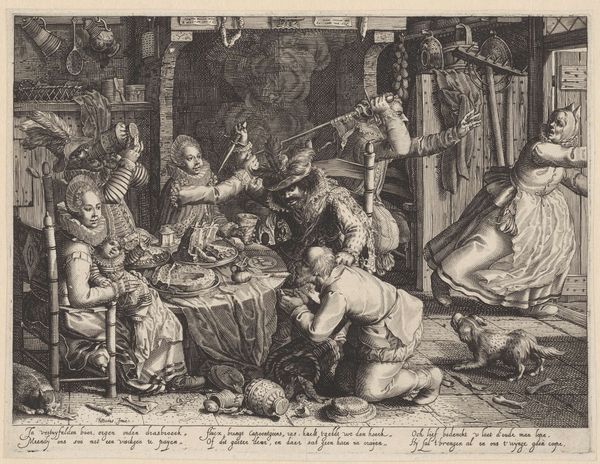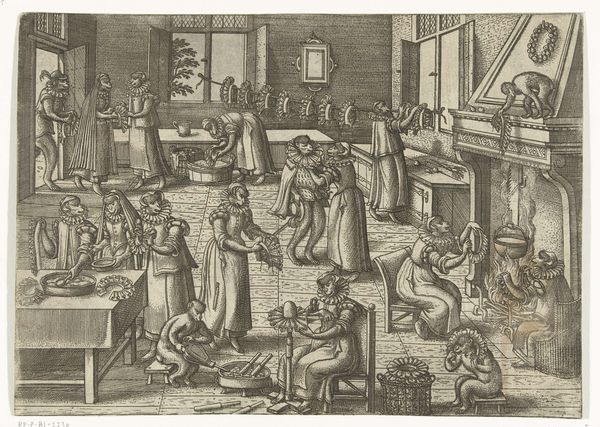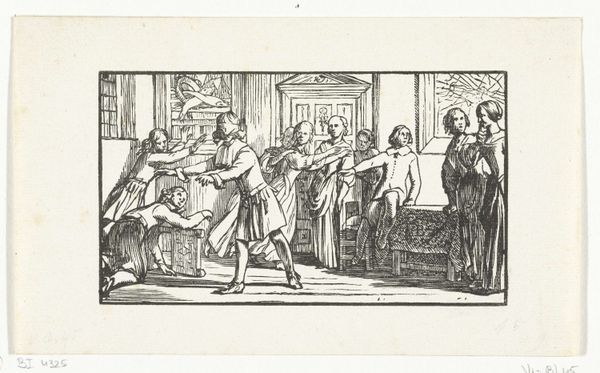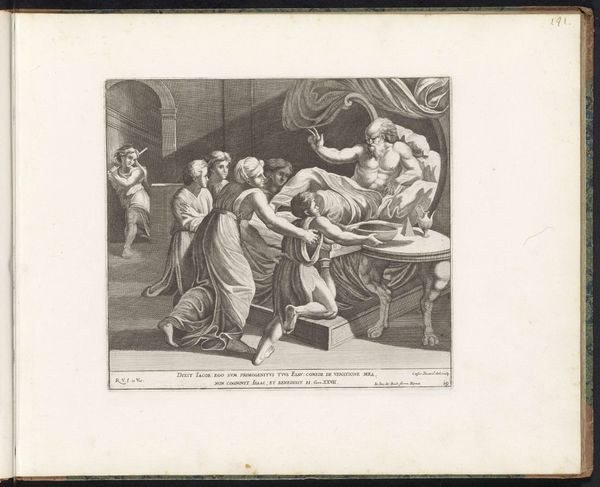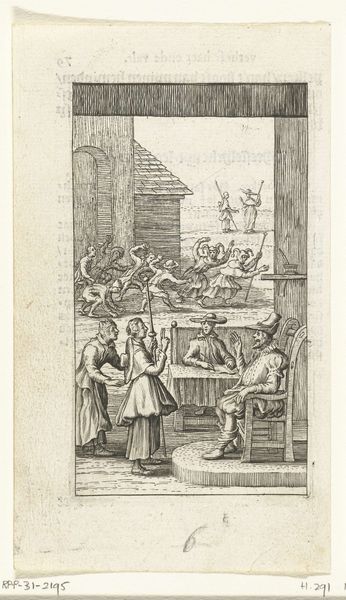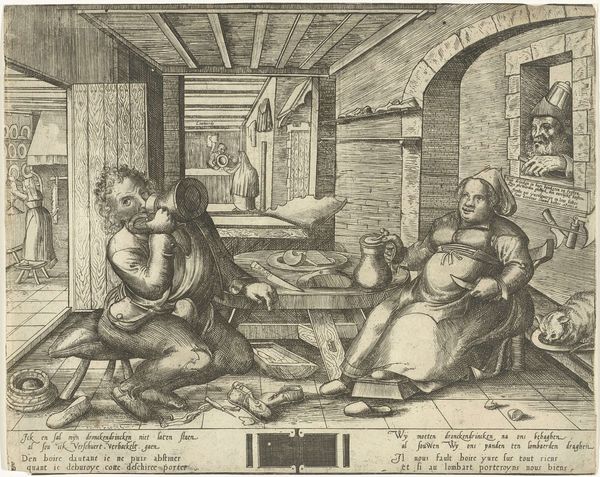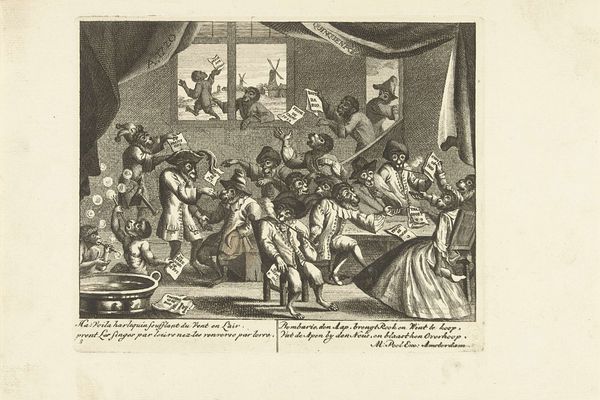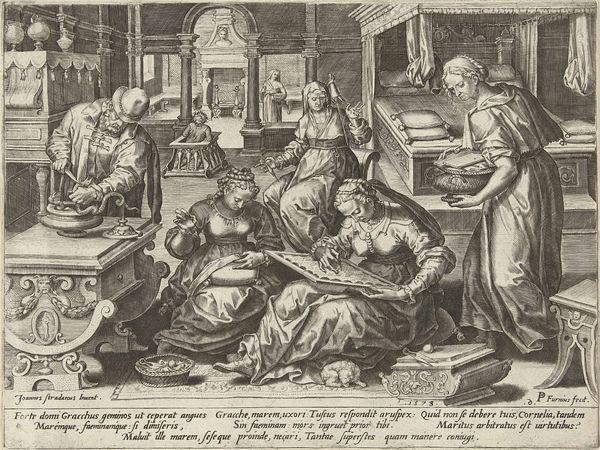
print, engraving
narrative-art
figuration
form
11_renaissance
line
genre-painting
history-painting
northern-renaissance
engraving
Dimensions: height 40 mm, width 51 mm
Copyright: Rijks Museum: Open Domain
Abraham de Bruyn made this engraving, "The Prodigal Son Squandering His Fortune," around 1570. Here, the artist used the technique of etching, which involves coating a metal plate with wax, scratching an image into the wax, and then dipping the plate in acid. This process leaves behind incised lines that hold ink, which are then transferred to paper. The scene depicts the biblical parable of the Prodigal Son, who wastes his inheritance on revelry. This small print underscores the moral lesson through its meticulous details. The texture of the clothing, the expressions on the faces, and the arrangement of figures around the table all contribute to the narrative. The choice of printmaking as a medium is significant. In the 16th century, prints were a cost-effective way to disseminate images and ideas widely. De Bruyn's print, therefore, speaks to the social context of its time, reflecting concerns about wealth, morality, and the consequences of excess. It reminds us that the value of art lies not only in its aesthetic qualities but also in its ability to communicate meaningful stories and social critiques.
Comments
No comments
Be the first to comment and join the conversation on the ultimate creative platform.
